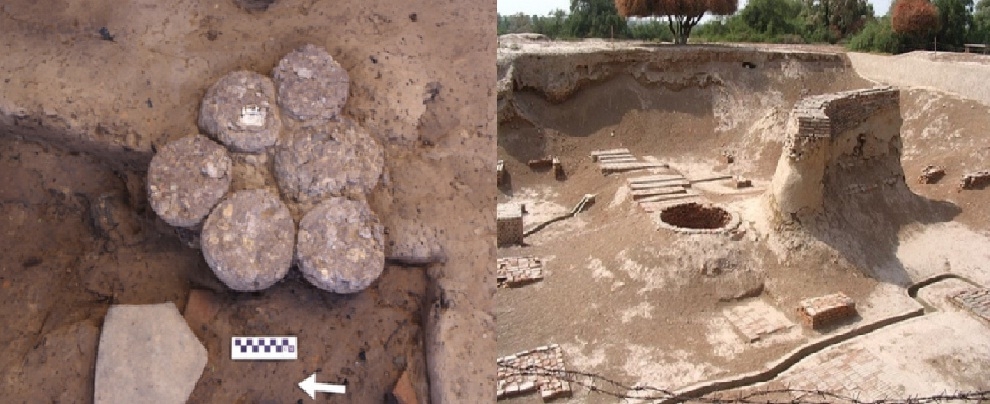“In the beginning, there was nothing”, this quote is often used to describe the start of the universe, the BIG BANG. This iterate can also be used as a snapshot of British research about Indian civilization. Their research conclusion can be summed up as ‘’ in the beginning, there was nothing, in India’’.
But as the legendary Carl Sagan once said- “Somewhere, something incredible is waiting to be known. As the Aryan invasion theory started to get debunked, the truth slowly started to knock on the gates of scientific academia and then to common people. People started to realize that India is a ‘civilization of civilizations.”
The latest in this series of glorious discoveries is the discovery of protein-rich multigrain ladoos, at the sites of the Indus valley civilization. A scientific study of the materials found at the Binjor excavation site in Western Rajasthan has confirmed the presence of seven multi-grain ladoos found between 2014 and 2017. Birbal Sahni Institute of Paleoscience (BISP) and Archaeological Survey of India (ASI) jointly conducted the study. It was published in ‘Journal of Archaeological Science: Reports’ by Elsevier.
“Seven similar big-size brown ‘ladoos’, two figurines of bulls and a hand-held copper adze (a tool similar to an axe, used for cutting or shaping wood) were excavated by the ASI at the Harappa site in Anupgarh district of Rajasthan. “These ladoos, dating back to around 2600 BCE, were found well preserved since a hard structure had fallen in such a manner that it acted as a roof over them and prevented them from getting crushed. Had they been broken, the ‘ladoos’ would have decayed entirely but since these were in contact with the mud, some of the internal organic matter and other green constituents remained protected”, said Rajesh Agnihotri, a BSIP scientist involved in the project. He added ‘’ the most peculiar thing about these ‘ladoos’ was that when it came in contact with water, the slurry turned purple’’.
The ladoos were peculiar in their manmade shapes and sizes, and this increased the curiosity of the scientists. Firstly, they thought of them to be a non-veg food, but a closer analysis of their composition revealed the presence of Barley, Chickpeas, wheat, cereals, pulses, moong dal. The ladoos are rich in Magnesium, Calcium, and Potassium, and protein.
The bull figurine, daze (a small axe), and a Harappan seal in the vicinity of the ladoos suggested some religious activities being carried out, with ladoos. According to scientists, the elements discovered were closely related to ‘ Pind Daan which is an offering of food to the deceased ancestors.
“After the scientific study, we can say that this is the first evidence to show that Harappan people performed some rituals on the banks of river Saraswati (now extinct). Though the nature of the ritual is not clear, it could be akin to ‘pind daan’ (offering of homage and food to ancestors).” said Sanjay Mujul, Director of Excavations at the ASI.
The offerings of ladoos at the Pind Daan in Indus valley civilization suggests that the agriculturist civilizational people made offerings, performed rituals, and then consumed ladoos as a part of their service to nature. It also suggests that the Indic civilization has always been grateful to nature for its gifts of life, awarded to every individual.
At around 2,500 BC, Europeans were a hunter-gatherer society. These hunter-gatherers had just started to play with stones. Mainly, they were dependent on hunting poor animals and eating them raw to have some energy for future hunting. Now, with artificial lab-grown soya-based highly estrogenic meat, West is trying to lecture the world about the plant-based diet. They should take a leaf out of Indian history and learn to maintain a balance between nature and humans. The sustainable development goal which is a part of the West-dominated United Nations in the 21st century has been an intrinsic feature of Indic culture.
